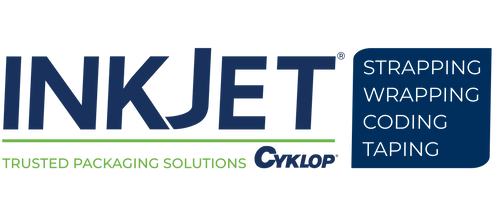Data Matrix vs. QR Code: When To Use Each | InkJet, Inc.
Data matrix codes and QR codes are quite cross-functional, and they have a similar look in most cases as well. This can lead some to believe that they are completely interchangeable, but this isn’t necessarily the case. While there is heavy overlap in the possible use cases of data matrix vs QR codes, their unique features make each lend themselves better to certain applications.
Let’s start with what is similar. Both code types are 2D codes, meaning they are able to represent alphanumeric data aligned vertically and horizontally, as opposed to barcodes which can only be read horizontally. This allows for increased data storage within each code when compared to barcodes. They both leverage finder patterns, or markings that are the same on every code to help scan tools identify their position and read the code. Now, what is different?
Data Matrix vs QR Codes
Data Matrix codes and QR codes differ in aesthetics, functionality, readability, data storage potential, and sometimes even shape.
Storage Capacity
The storage capacity of QR codes is larger, but so is their minimum size. So, while data matrix codes are seemingly at a disadvantage when it comes to storage, they can outperform QR codes in smaller form factors, and some footprints are so small that they are only compatible with data matrix codes. Another worthwhile note is that only QR codes can store Kanji/Kanja characters.
Size Range
Size range refers to the number of readable cells that each code can display. It is worth noting that data matrix codes are incremented in 2-cell increments, whereas QR codes are in 4-cell increments. This is because QR codes are always squares, whereas data matrix codes can be made rectangular. Following the trend set above, QR codes have a higher maximum and minimum size.
Error Correction Level (ECL)
ECL is the percentage of the code that can be damaged before it can no longer be read. Both QR codes and data matrix codes have a maximum ECL of 30%, but how that level is determined differs.
Data matrix codes have an ECL that is automatically determined by the size of the code and the amount of storage capacity headroom remaining after all data is stored. QR codes’ ECL is manually selected, and by manually selecting a higher ECL, the storage capacity of the code is lowered. This means both codes have ECLs that can be tweaked manually, but data matrix codes require the user to influence the ECL indirectly by increasing the code size to create headroom between their max capacity and the amount of data stored.
Readability
The primary reason why consumers don’t tend to know much about data matrix codes is that they can only be read by specific 2D barcode scanners. QR codes can be read by any camera with access to the right software, making them more compatible with consumer-facing applications.
Data Matrix and QR Code Applications
The above differences in functionality and form factor provide distinct advantages for each code type in certain applications. Below are some of the common applications for each code type, and why they are used for them.
Data Matrix Code Applications
The primary advantage of data matrix codes are their size, and their ability to store more information at smaller form factors. This makes them the go-to code for smaller products like individual electronic parts, as well as industries where traceability is a concern like automotive and aerospace parts. They are also the only 2D codes approved by GS1 for healthcare/medical marking applications.
QR Code
Since QR codes are larger and can store more data, they are typically used in applications that require this capacity. They are also the only option for consumer-facing applications, which is why they are used for things like user instructions, recipes on food items, social media sharing, website links, and marketing promotions.
Printing Data Matrix and QR Codes
Below are all of the printers we offer that are capable of printing data matrix and QR codes on your production line:
Learn the Best Data Matrix and QR Code Solutions With the Right Vendor
Printing systems like these can improve the efficiency, traceability, and simplicity of your labeling/marking process. To get the most out of these systems, though, users should be able to rely on high-level customer support and product education from their vendor. Unfortunately, vendors in this industry can be hard to reach.
At Inkjet, Inc., we pride ourselves on our dedication to client advocacy, customer support, and expert guidance on using all printing solutions we sell. Not only will you get the assistance you need to get up and running with your Evolabel system, but we make it a point to be easily reachable over the phone or email, with prompt responses and quick resolutions to any query or complaint.
If you’re interested in finding out whether data matrix codes vs QR codes are better for your business, or how to print them, contact InkJet, Inc. today to get started.
To decide between data matrix vs QR codes for your operation, contact InkJet, Inc. online today or call 1(800) 280-3245.



